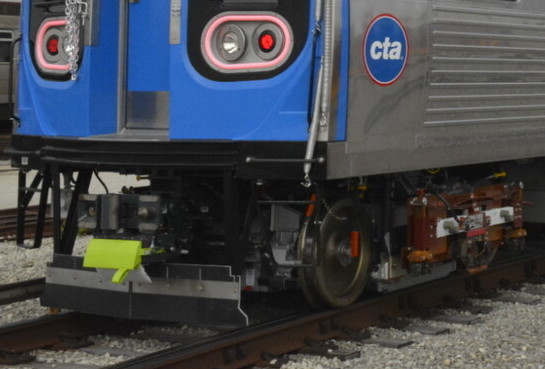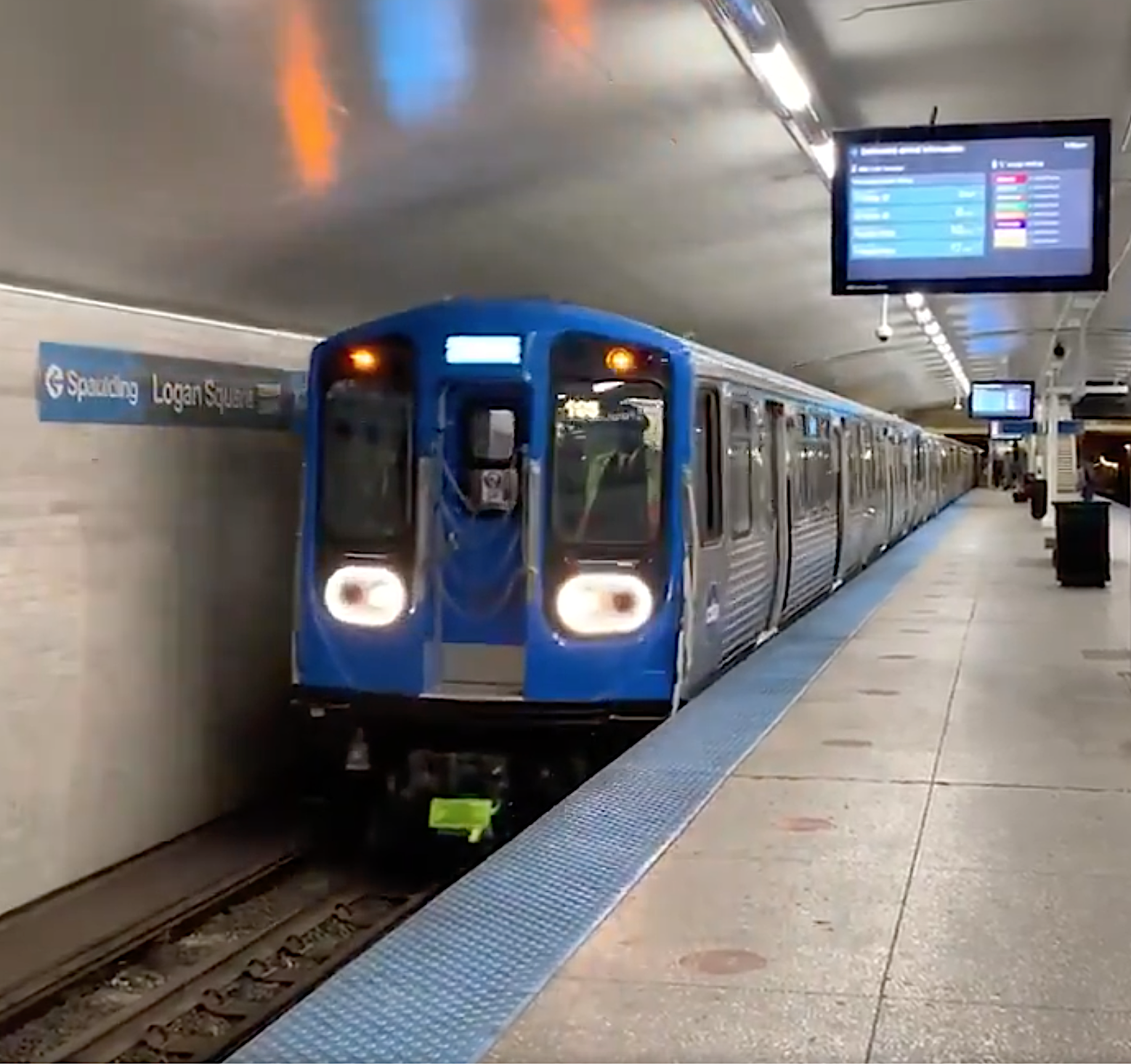In an op-ed earlier this week, a guest contributor wrote that his understanding was that CTA trains are loud due to flat spots on wheels caused by electric disc brakes that often cause the wheels to lock up and the train to briefly slide along the rails, creating flat spots on the wheels. They argued that using air brakes with shoes that press directly against the wheel surface itself, as is the case on Metra and New York's subway trains, would reduce slippage and help the wheels wear evenly. And they expressed disappointment that the CTA's new 7000-series railcars still have electric disc brakes.
However today the CTA informed us that information was inaccurate – neither the 7000-series nor the second-newest 5000-series railcars have electric disc brakes, but instead they are equipped with two different types of braking systems that are used at different points of operation. Regenerative/electric braking is mostly used to slow down trains anywhere from 55 to 3 mph, and hydraulic/friction braking helps lower the speed of the train below 3 mph. Apologies for publishing that incorrect info; I've added an update to that piece.
"Regardless of the type of braking system (hydraulic or air) flat spots are caused by a wheel/axle that stops spinning or slides," a CTA spokesperson explained. "There are numerous issues that may cause wheel flats such as wet/slippery track conditions, electrical/mechanical issues or emergency stops. As a result of advancements in technology, the 7000s are equipped with improved propulsion and braking control systems compared to previous CTA railcar series, including the 5000-series... These improvements [are] expected to reduce the likelihood of wheel flats."

The spokesperson said that when the CTA began designing the 7000-series cars, agency engineers looked into air-brake systems as a potential option. "However, railcar manufacturers and numerous parts suppliers indicated that this was not a viable option for railcars designed to fit with CTA’s existing infrastructure." On top of that, the spokesperson said, even with air-brakes, railcar wheels can get flat spots.
"A leading factor behind the noise levels of CTA’s trains versus other systems, like Metra, is the difference in track infrastructure and surrounding environment," the spokesperson added. "For example, Metra mostly operates on at-grade or embanked tracks, which significantly reduce sound. [In contrast,] some of the most densely populated areas of Chicago are served by CTA trains on elevated structures, the vast majority of which is open decked. "
The spokesperson said that while the 7000-series cars have only recently started carrying passengers, they had already undergone several months of rider-free testing, and there was no noticeable wear on their wheels.
So to recap, the CTA says its most recent cars don't have electric disc brakes, air brakes weren't a viable option, and much of the reason its trains are noisy has nothing to do with the braking system anyway.




